Finding essential truths in the natural world
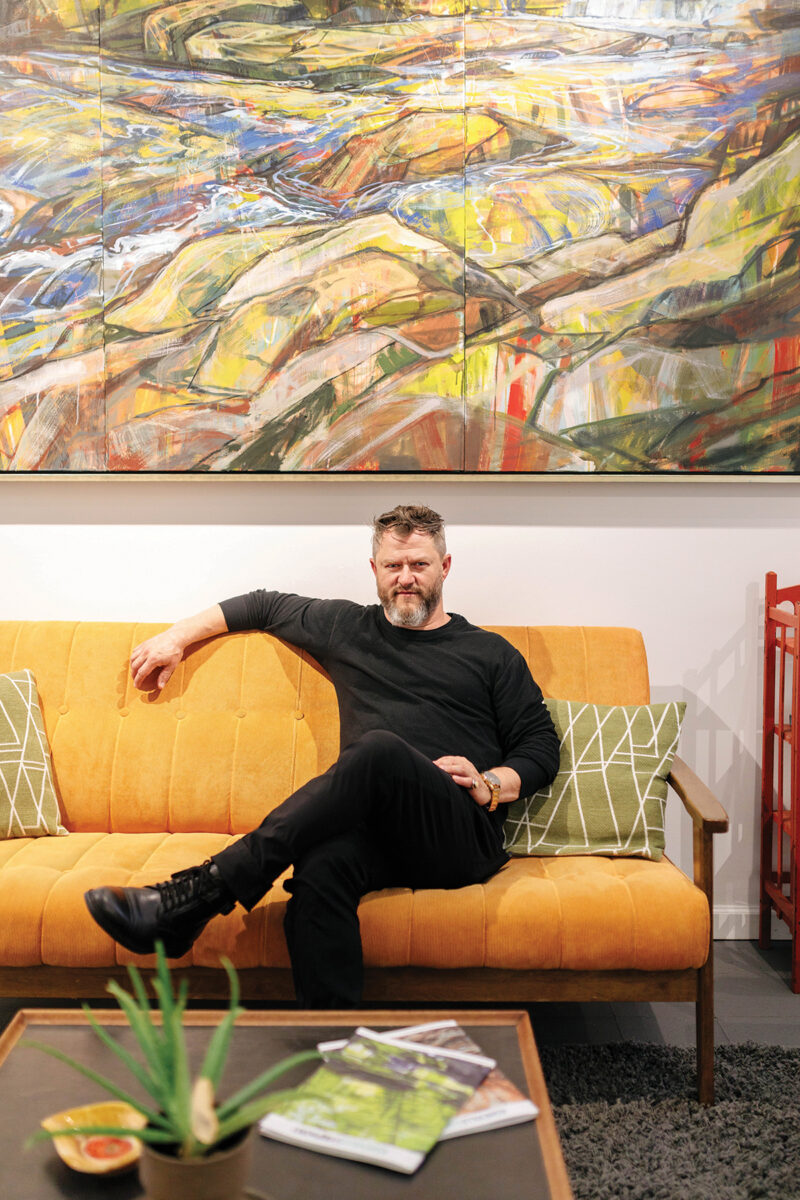
Photo by Rachel Pressley
Any visual artist putting paint to canvas faces a conundrum – how to convey the complexity of human perception and experience with a two-dimensional medium. Impressionists sought the hazy borders of sense and memory; Fauvists turned to flagrant color. Cubists deconstructed the figure, and abstract expressionists abandoned the figure altogether. For Jeremy Russell, the answer lies somewhere on either side of the border between figuration and pure abstraction.
“I guess I teeter on the edge of brand-new and refinement,” the Asheville painter says. “My focus is to recreate a moment in time, an experience of being in a place as opposed to painting an image of a place.” The result has been a series of landscapes that seem in the act of coalescing from a collection of shapes and marks, still shimmering in the act of creation. The landscapes actually begin as purely abstract pieces worked in acrylics, from which he carves out natural forms using traditional tools of perspective and proportion. “It’s a unique balancing act,” he says.
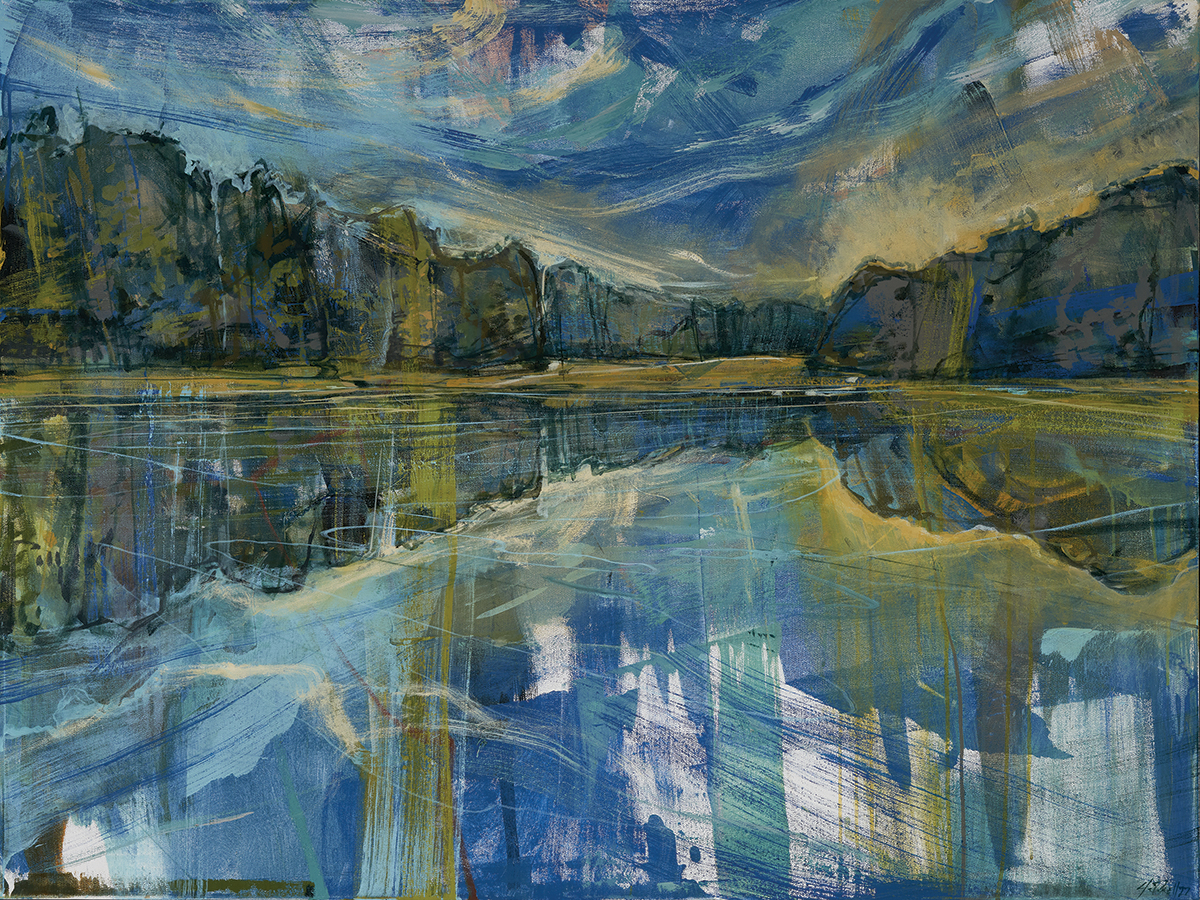
Even Russell’s more purely abstract work appears to be about to organize itself into form and substance, just as the jazz classics and jam bands from another artistic sphere which Russell cites as an influence hover around a central theme but take it in new directions. “I love expression that isn’t anchored in tradition or a formulaic structure,” Russell explains, “but is more in the moment, of the moment. Jerry Garcia once said in an interview about the marketability of the Grateful Dead’s music, ‘Why play the same thing twice? Why create anything twice?’ I largely agree.”
Remarkably, Russell’s other major influence is the commercial, representational art he spent years making as a journeyman artist, from murals to theater sets and even painting amusement-park rides. “It plays a huge role,” he says of his 20 years as a self-described “blue-collar artist.”
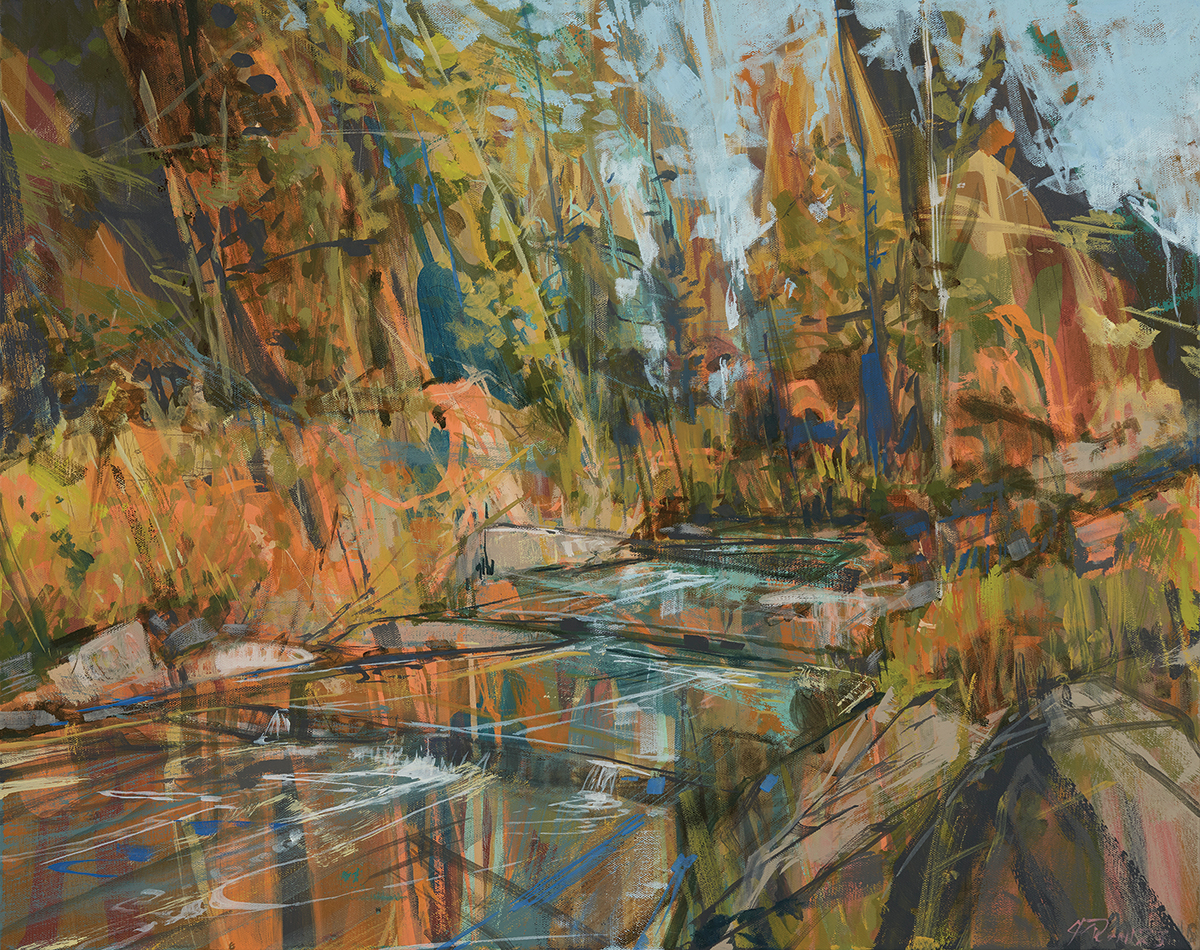
“I was good at it, and it’s not just the artistic part, but the work ethic and resilience. Being a successful artist is a full-time job; it’s working on 10 or 15 pieces at the same time.” During those years, Russell gained an encyclopedic knowledge of faux finishes to mimic nature and to survive in places exposed to sun, storms, and close contact with people. He ran a mural business for three years with longtime friend Scott Allred, Brushcan Custom Murals (still in business decorating Asheville), while working on the fine-art pieces he made for himself but which few others ever saw.
This early and more private work drew on impressions he’d gained as a youngster supported by a creative family with a fondness for American history and visits to Civil War and Revolutionary War sites. “There are a lot of campy memories,” Russell says, “and kitsch has always been a source of nostalgic color development for me. My family’s always been very supportive and influential in my career.”
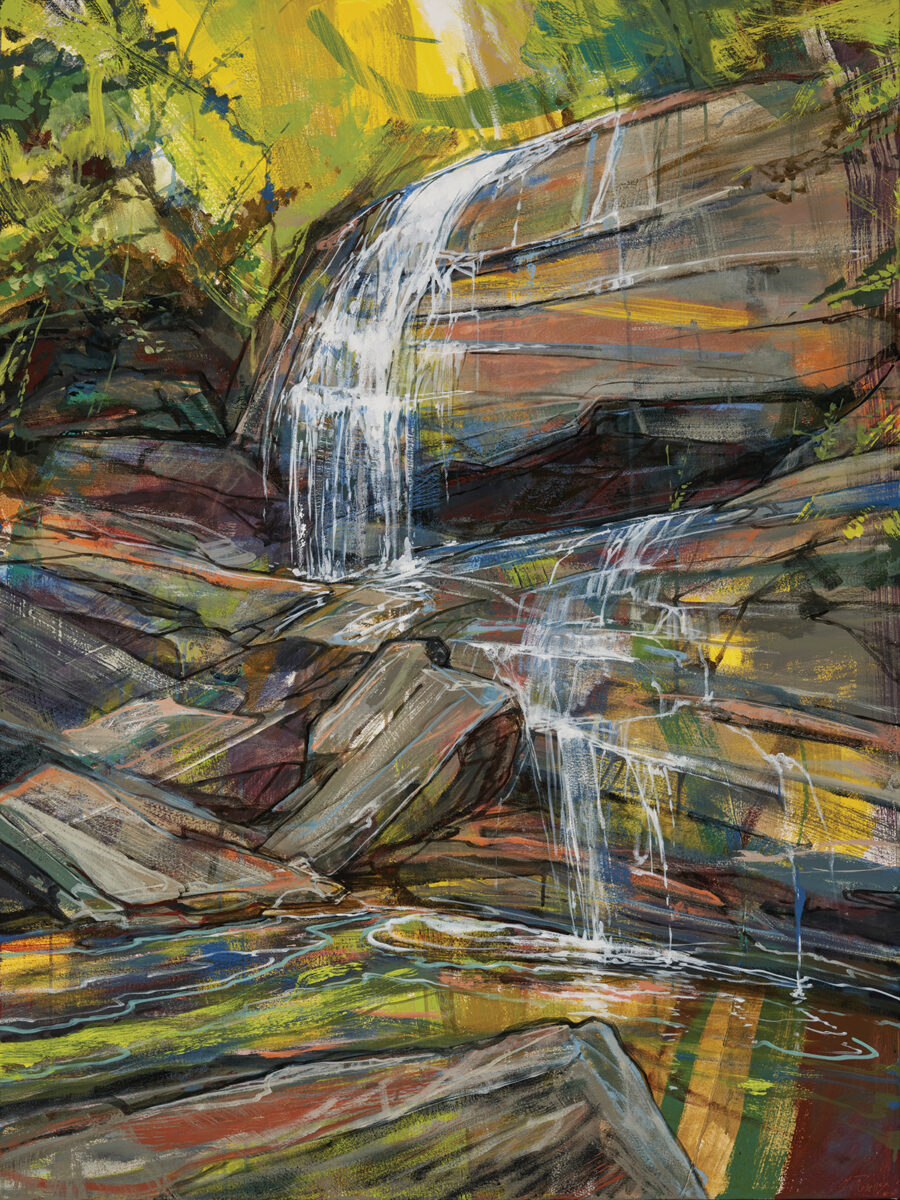
Russell’s private work, as opposed to his commercial ventures, remained very much in the shadows until he received a diagnosis of Hodgkin’s lymphoma a little more than four years ago, suddenly rearranging his priorities. “The things in life that are important floated up to the surface,” he says of the months he spent in treatment for the disease, when painting for himself rather than commercial clients moved to the top of the list. “I never acknowledged that I could make a living like this, not the kind of living that supports a family,” Russell says. “But I’ve been in remission for three years now, so I just went for it, and it worked.”
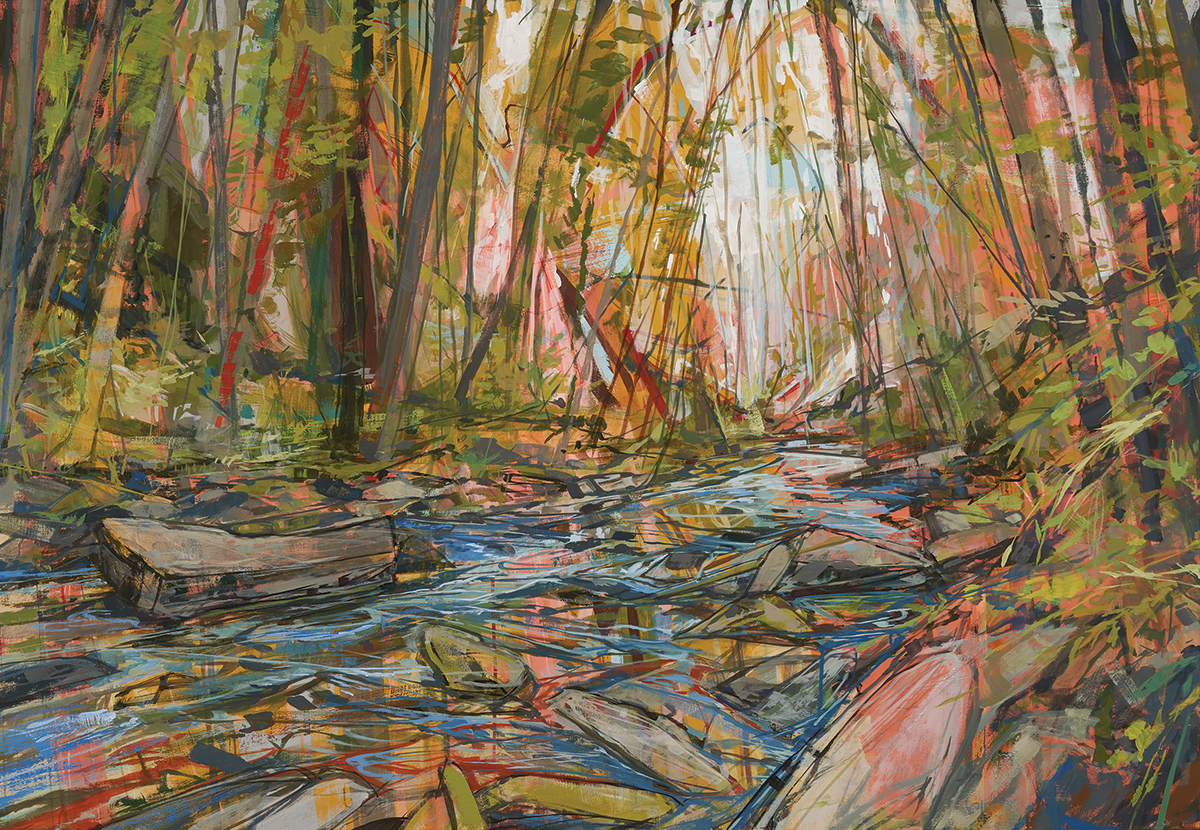
He credits Asheville’s Blue Spiral Gallery and its director Michael Manes for guiding him to a full-on career for his work. “He’s one of the most informed gallery directors I’ve ever met,” Russell says of Manes, “and he gives me critiques that are accurate and intuitive. He really has an artist’s mind.” Further support has come from his partnership with fellow artist Alicia Anne Armstrong, with whom he created Russell & Armstrong Gallery, which opened downtown two years ago. “She knew the business better than me,” he says of Armstrong, “and we’ve done very well together.”
The landscapes are now Russell’s post-cancer focus and first love. “After looking for ‘truths’ through the process of painting,” he says, “I found those truths exactly where they always are, in the natural world.”
Jeremy Russell, Asheville, jeremyrussellart.com, Russell & Armstrong Gallery (24 North Lexington Ave., russellandarmstronggallery.com). Russell’s work is also represented downtown at Blue Spiral 1 Gallery (38 Biltmore Ave., bluespiral1.com).
